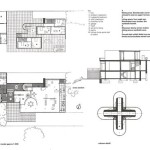FAFSA Housing Plans: Understanding Your Options and Impact on Aid
The Free Application for Federal Student Aid (FAFSA) is a crucial step for students seeking financial assistance for college. While many focus on the financial aspects, the housing plan selected on the FAFSA can also significantly impact the aid received. Understanding the different housing options and their potential implications is essential for maximizing financial aid eligibility.
Key Points:
1. On-Campus Housing
2. Off-Campus Housing
3. Living with Parent(s)
The FAFSA presents several housing options for students to choose from. These options generally fall into three categories: on-campus housing, off-campus housing, and living with parent(s). Each category carries different cost implications, which the FAFSA uses to calculate the student's cost of attendance (COA) and subsequently, their financial need.
Key Points:
1. Cost of Attendance (COA)
2. Financial Need Calculation
3. Impact on Aid Eligibility
On-campus housing typically includes room and board provided by the institution. Costs associated with on-campus housing are generally higher than living with parents but can be lower than off-campus housing in some cases. The FAFSA uses the school's standard on-campus housing and meal plan costs to calculate the COA for students selecting this option. This standardized cost helps streamline the process and ensure consistency.
Key Points:
1. Room and Board Inclusion
2. Standardized Cost Calculation
3. Comparison to other options
Off-campus housing encompasses a wide range of living arrangements, from apartments and shared houses to living with relatives other than parents. Students selecting this option often face varied costs depending on location, amenities, and individual living arrangements. The FAFSA uses an average cost estimate provided by the institution for off-campus housing. This estimate might not reflect the student's actual expenses, leading to potential discrepancies in aid calculations.
Key Points:
1. Variety of Living Arrangements
2. Estimated Cost Calculation
3. Potential for Discrepancies
Living with parent(s) is often the most cost-effective housing option for students who live within commuting distance of their chosen institution. This choice usually results in a lower COA, as the FAFSA assumes reduced living expenses. Students living with their parent(s) are not typically expected to incur room and board expenses, resulting in a potentially lower need calculation and, therefore, possibly lower aid eligibility.
Key Points:
1. Reduced Living Expenses
2. Lower COA Calculation
3. Potential Impact on Aid
Choosing the accurate housing plan on the FAFSA is crucial. Inaccurate information can lead to adjustments in financial aid packages later. Students should carefully consider their intended living arrangements and select the option that best reflects their situation. Contacting the financial aid office at the chosen institution is advisable for guidance and clarification on specific housing costs and their impact on financial aid.
Key Points:
1. Accuracy Importance
2. Potential for Adjustments
3. Seeking Guidance from Financial Aid Office
While the FAFSA housing plan impacts the overall COA and financial need calculation, it's important to note that other factors also play significant roles in determining aid eligibility. Factors such as income, family size, and asset information all contribute to the final aid package. Students should consider the housing plan as one piece of the larger financial aid puzzle.
Key Points:
1. Holistic Aid Determination
2. Consideration of Other Factors
3. Income, Family Size, and Assets
Understanding the nuances of the FAFSA housing plan options empowers students to make informed decisions that align with their financial needs and living preferences. Careful consideration of these factors can help ensure access to the appropriate level of financial assistance for a successful college experience.
Key Points:
1. Informed Decision Making
2. Alignment with Needs and Preferences
3. Maximizing Financial Assistance

Using Student Loans For Off Campus Housing Expenses Loan Planner

How To Shelter Assets On The Fafsa

Filling Out The 2024 Fafsa Financial Design Studio

Fafsa Section 2 School Selection Housing Plan On Campus With Pa Or Off

Do You Get Extra Financial Aid For Off Campus Housing In Short No

Is My College Housing Covered By Financial Aid Credible

Financial Aid Wellness

8 Steps To Complete The Fafsa Brand College Consulting

13 Things To Know When Evaluating Your Financial Aid Offers Federal Student

What Is Fafsa Complete Guide For 2024
Related Posts








